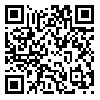Volume 65, Issue 4 (3 2007)
Tehran Univ Med J 2007, 65(4): 38-43 |
Back to browse issues page
Download citation:
BibTeX | RIS | EndNote | Medlars | ProCite | Reference Manager | RefWorks
Send citation to:



BibTeX | RIS | EndNote | Medlars | ProCite | Reference Manager | RefWorks
Send citation to:
Talebian S, Olyaei GR, Hadian MR, Bagheri H, Mehrdad S. Motor control changes in sagittal motion of lumbar spine following use of lumbosacral belt. Tehran Univ Med J 2007; 65 (4) :38-43
URL: http://tumj.tums.ac.ir/article-1-800-en.html
URL: http://tumj.tums.ac.ir/article-1-800-en.html
Abstract: (6658 Views)
Background: The changes in motor control after the use of a supportive belt can contribute to the understanding of its effects on performance. The aim of this study is to quantify motion pattern values relative to the spinal column during the use of a lumbosacral belt.
Methods: For fifty healthy female volunteers, the range of motion, maximum isometric torque and changes of phase angle of maximum torque and velocity in two positions, standing and sitting, in two directions, flexion and extension, following the use of a lumbosacral belt were measured using an isoinertial dynamometer (Isostation B200) and compared.
Results: Range of motion in both directions in both positions was reduced significantly (P<0.05). Significant reduction of maximum isometric torque was observed in flexion while sitting and in extension while standing and sitting (P<0.05). Phase angle of maximum torque and velocity also changed significantly in both directions and both positions (P<0.05).
Conclusion: The lumbosacral belt can act in different ways to prevent injury. It reduces the forces applied to lumbar vertebra and, by changing the maximum torque and velocity phase angles at the onset of range of motion, provides greater stability for joints. Furthermore, the belt can reduce stress imposed on the posterior joints of the spine and limits several momentary forces at the onset of joint movement. Under these conditions, joint injuries can be reduced and prevent some of the mechanical stress that causes lumbar joint disease.
Methods: For fifty healthy female volunteers, the range of motion, maximum isometric torque and changes of phase angle of maximum torque and velocity in two positions, standing and sitting, in two directions, flexion and extension, following the use of a lumbosacral belt were measured using an isoinertial dynamometer (Isostation B200) and compared.
Results: Range of motion in both directions in both positions was reduced significantly (P<0.05). Significant reduction of maximum isometric torque was observed in flexion while sitting and in extension while standing and sitting (P<0.05). Phase angle of maximum torque and velocity also changed significantly in both directions and both positions (P<0.05).
Conclusion: The lumbosacral belt can act in different ways to prevent injury. It reduces the forces applied to lumbar vertebra and, by changing the maximum torque and velocity phase angles at the onset of range of motion, provides greater stability for joints. Furthermore, the belt can reduce stress imposed on the posterior joints of the spine and limits several momentary forces at the onset of joint movement. Under these conditions, joint injuries can be reduced and prevent some of the mechanical stress that causes lumbar joint disease.
| Rights and permissions | |
 |
This work is licensed under a Creative Commons Attribution-NonCommercial 4.0 International License. |





